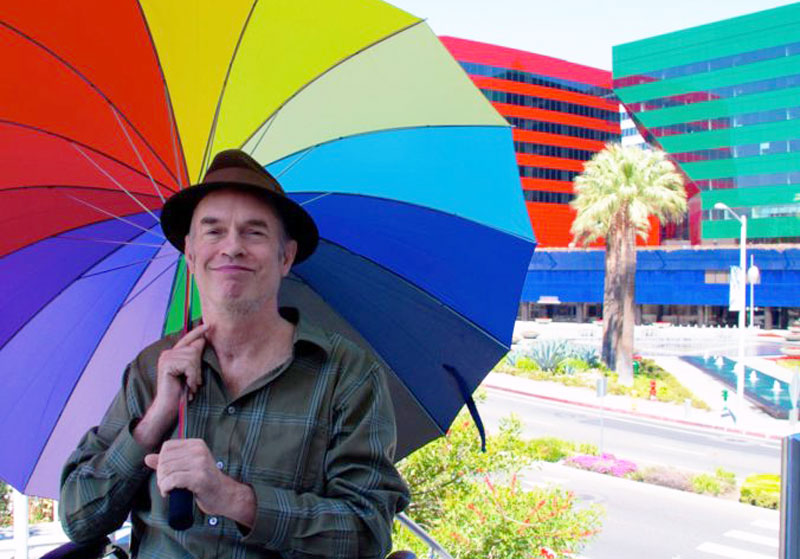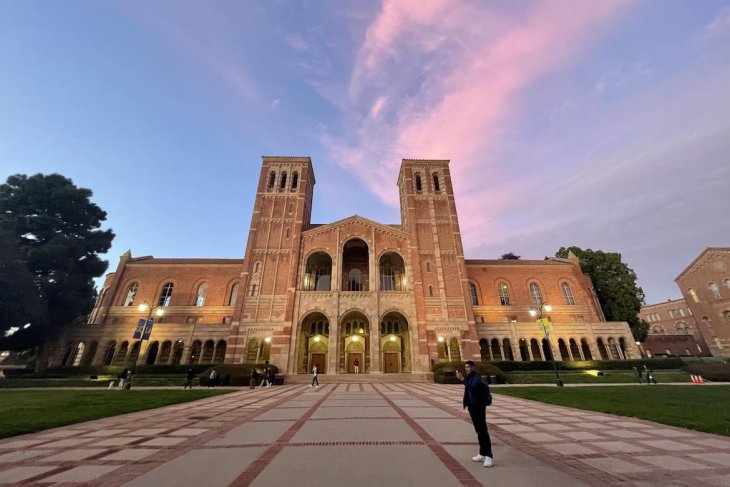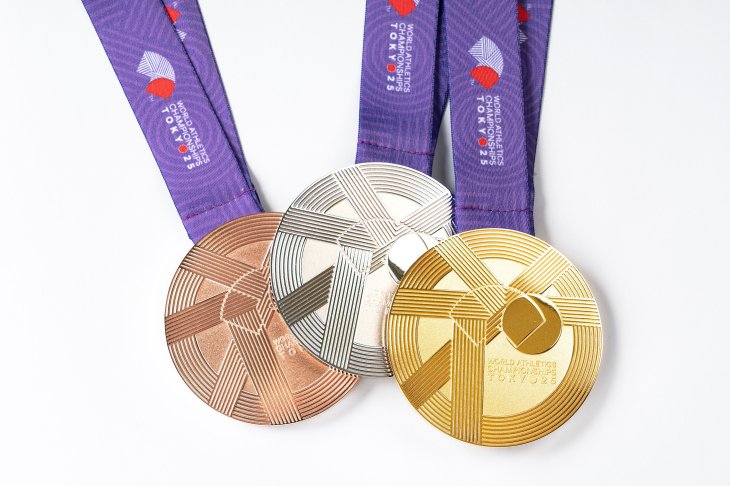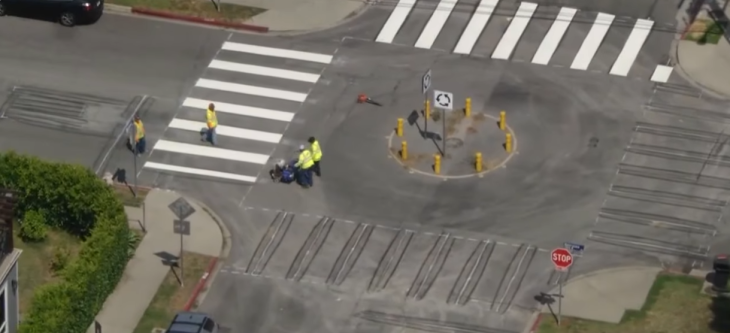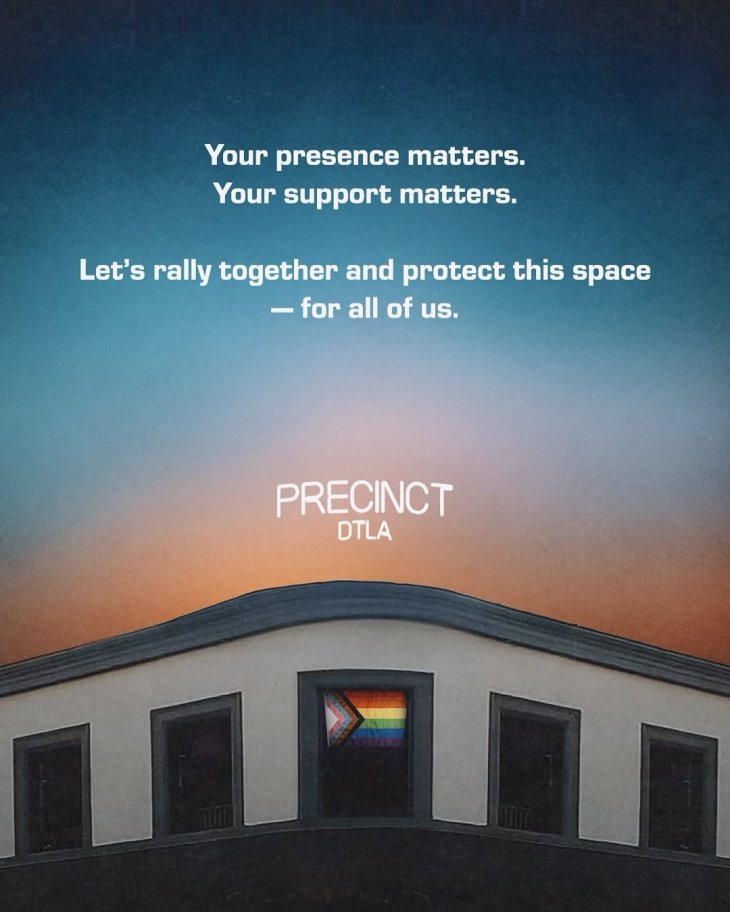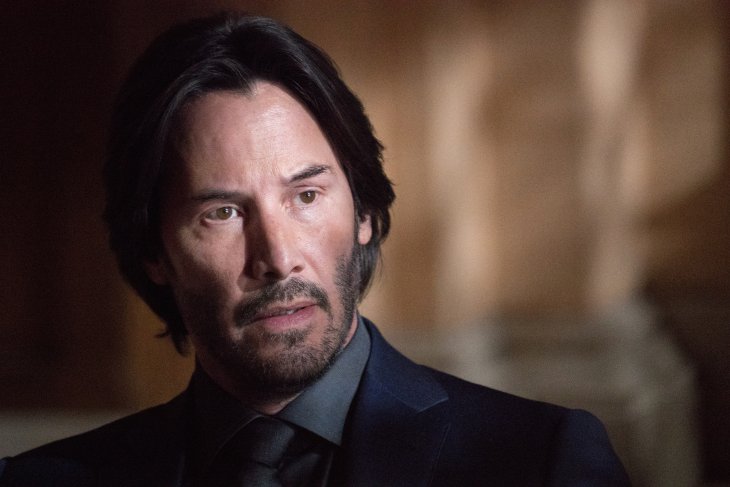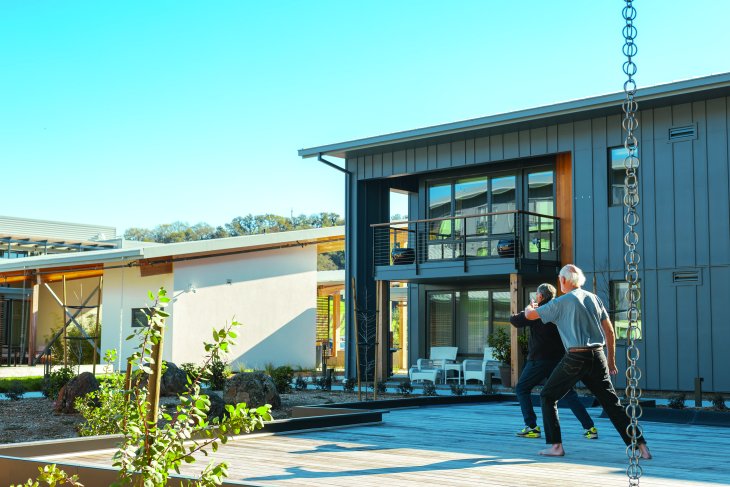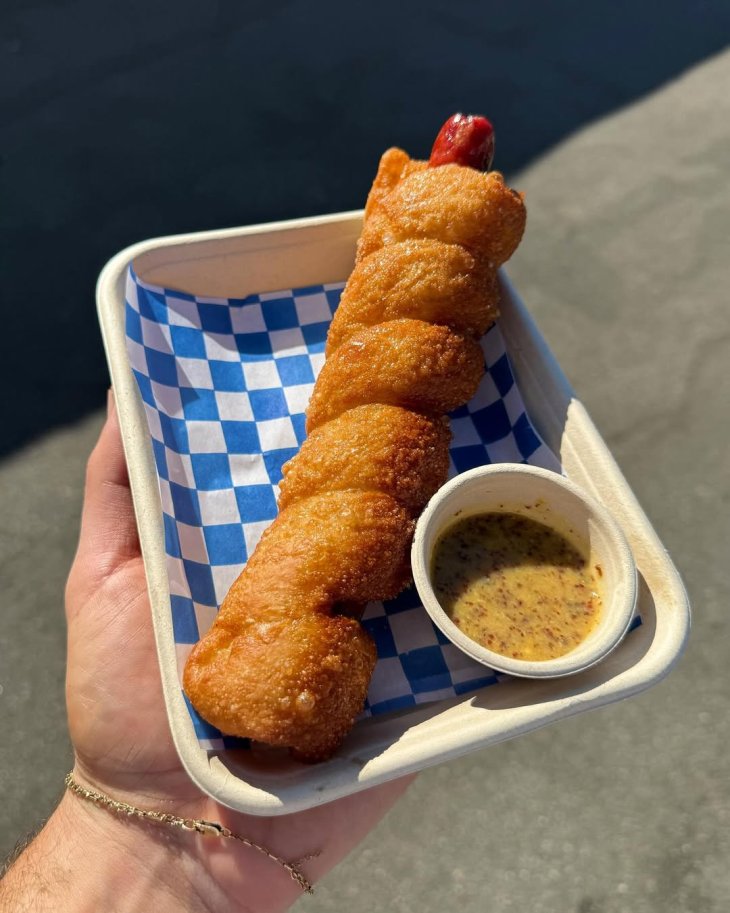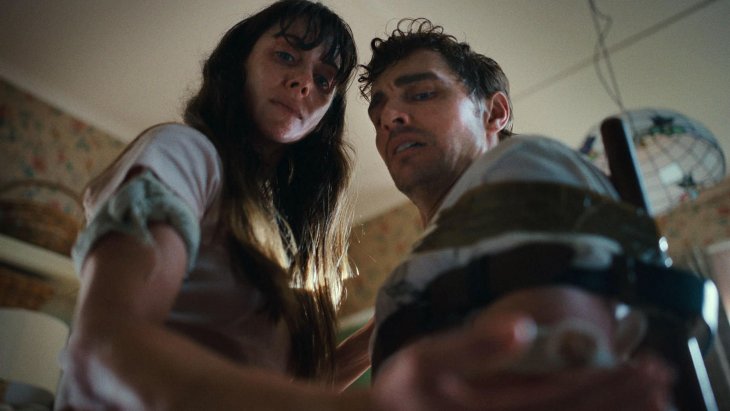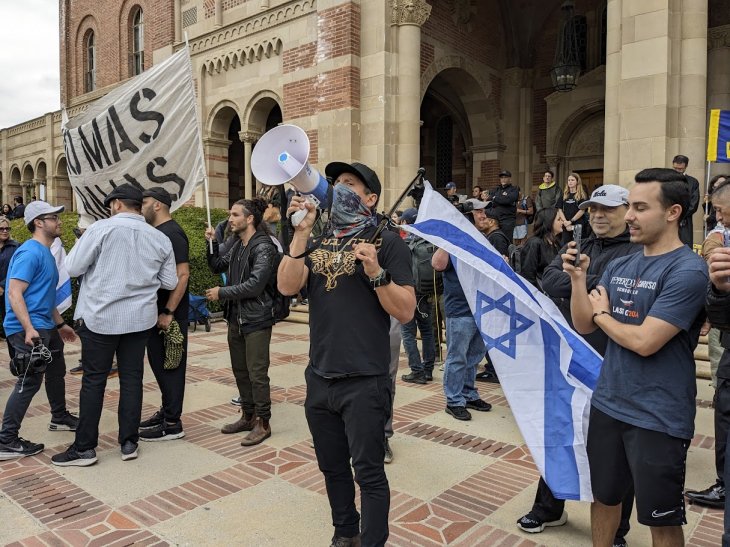 BY KAREN OCAMB | Author, historian, gay activist Stuart Timmons died Saturday morning at the Serrano North Convalescent Hospital in Hollywood, just two weeks after his 60th birthday on Jan. 14. Apparently he developed breathing problems and his heart stopped, according to an email sent to friends by his sister Gay Timmons.
BY KAREN OCAMB | Author, historian, gay activist Stuart Timmons died Saturday morning at the Serrano North Convalescent Hospital in Hollywood, just two weeks after his 60th birthday on Jan. 14. Apparently he developed breathing problems and his heart stopped, according to an email sent to friends by his sister Gay Timmons.
Timmons suffered a debilitating stroke 9 years ago but had been active in the West Hollywood and Silver Lake gay communities over the past four years. Recently he was back in the hospital, receiving visitors. “Keep the smiles coming by visiting Stuart Timmons!
He’s still glowing from his recent 60th birthday and excited to talk to visitors about history, how rebellion’s work – and looking forward to the 3rd year of his WeHo LGBTQ History Tour special event happening on June 3rd!,” Jason Jenn wrote Jan. 24 on his Instagram page.
 Jenn had partnered with Timmons on that LGBTQ History Tour, timed to be part of the annual City of West Hollywood’s One City One Pride LGBTQ Arts Festival in 2015.
Jenn had partnered with Timmons on that LGBTQ History Tour, timed to be part of the annual City of West Hollywood’s One City One Pride LGBTQ Arts Festival in 2015.
Timmons had started walking tours of West Hollywood, Downtown Los Angeles and Silver Lake in 2007 but was sidelined after his stroke in 2008.
The extent of that stroke was known to only a few until it was described on the White Crane website in Nov. 2008 promoting a fundraiser for the 51 year old to pay for his surgery, medical expenses and therapy at Kaiser Hospital and the convalescent facility.
Two years later, the Stuart Timmons Trust Blog added more information:
“Stuart had a severe cerebellar stroke on Jan. 30th of 2008. He was not cognitively “present” for 2 years – he sort of slept………… Between Christmas and New Years of 2009, he realized that something had happened and, upon discovering the story of the stroke, became despondent and suicidal. Then, after a lot of other stuff, on March 8th of 2010 he decided to get better…….”, reads the introduction to a post entitled Stuart Timmons “After the Flood.”
“Stuart is first and foremost, a writer with historian being a close second. He has lived in Los Angeles since 1977, “ the introduction continues. “He wrote 4 books, two of which were published, before the stroke. The effect of the stroke on his brain was to render him unable to initiate action. This seems to be slowly resolving itself. This blog contains his new writing after, essentially, two years of sleeping. I say, never give up. The brain is “plastic” and can heal itself as long as we give it the time, healthy support, and reason to recover……… His family and his friends adore him and couldn’t be happier to share his work.”
Another section of the blog was apparently written by Timmons on June 10, 2014:
“Stuart Craig Timmons was born January 14, in Cottagewood Hospital in Minneapolis, Minnesota, at 7:30 am. His father sed to joke that he was born covered with ice cycles. He was the longest babu ever born in that hospital. While still a toddler, he moved to Santa Barbara, because his father got a job there and his mother’s sister, Aunt Martha, lived there. He remembers Santa Barbara as idyllic, especially the house on St. Francis Way and the pastoral landscapes and beaches. We had a lot of nice neighbors. The Bennett’s lived across the street (she was a nice lady who shaved ever day and wore heavy foundation makeup), the Liters lived right up from us, the Sawtelles lives across the street and ad a player piano and a swimming pool, and the Cooleys and the Robinsons lived down the street. So did Aunt Martha, which was a primary reason Mama moved there. Martha was the original tasteful lady, with perfect furniture, perfect art, perfect clothes, perfect everything. Her best friend was a tall lady named Marie Miller, who was sort of a premature Martha Stewart, who had fixed up and old barn so that she could rent out rooms. Santa B. was like my own private Eden.”
Simmons’ life radically changed when he came to L.A. in the mid-1970s to attend UCLA where, as a college junior active in the Gay Liberation Movement, he met pioneer Harry Hay. Timmons describes the encounter in the Introduction to his biography of Hay, The Trouble With Harry Hay: Founder of the Modern Gay Movement.
 “I met him at a Radical Faerie gathering in the spring of 1980. He cut a dramatic figure, his tall frame draped in a pale shawl and topped by a broad-brimmed black hat that might have belonged on a Quaker elder. Harry Hay spoke dramatically, too, about maximizing the differences between gays and straights instead of downplaying them. Maximizing differences? This was utterly contrary to the conventional wisdom — and completely intriguing,” Timmons writes.
“I met him at a Radical Faerie gathering in the spring of 1980. He cut a dramatic figure, his tall frame draped in a pale shawl and topped by a broad-brimmed black hat that might have belonged on a Quaker elder. Harry Hay spoke dramatically, too, about maximizing the differences between gays and straights instead of downplaying them. Maximizing differences? This was utterly contrary to the conventional wisdom — and completely intriguing,” Timmons writes.
“His large hands grasped both of mine when I approached later to say how honored I was to meet him. Gay men who, like me, have been aware of him for years, shower Hay with these earnest introductions. But on each occasion his dome-like brow furrows with concentration, and he holds the hands or shoulders of the individual, staring fixedly into their eyes. And intense personal bond is quickly case, into which Hay often injects a challenging statement. In my case—as a college junior approaching an offbeat intellectual nearing seventy—he said, ‘You know, you probably wouldn’t be talking to me at all if we were back in their world, at some gay bar. Remember that when we go back.’ With only the wilderness and gentle gay men around us, and given my uncertainties about what life held after school, his words struck deep,” Timmons wrote.
 The words struck deep and flowered, coloring much of his gay and AIDS activism and his writings for gay publications such as Frontiers and The Advocate, as well as then-left-leaning publications such as The LA Weekly. He also teamed up with acclaimed lesbian historian Lillian Faderman to co-author “Gay L. A.: A History of Sexual Outlaws, Power Politics and Lipstick Lesbians,” which won the Lambda Literary award for LGBT Arts and Culture in 2007.
The words struck deep and flowered, coloring much of his gay and AIDS activism and his writings for gay publications such as Frontiers and The Advocate, as well as then-left-leaning publications such as The LA Weekly. He also teamed up with acclaimed lesbian historian Lillian Faderman to co-author “Gay L. A.: A History of Sexual Outlaws, Power Politics and Lipstick Lesbians,” which won the Lambda Literary award for LGBT Arts and Culture in 2007.
Because of his knowledge and love of LGBT history, Timmons also served as a former board member and executive director of the ONE National Gay and Lesbian Archives with his longtime friend, author Mark Thompson.
 By July 2010, Timmons seemed well enough to participate in celebrating Harry Hay’s 100th birthday, as Thompson announced on the White Crane website:
By July 2010, Timmons seemed well enough to participate in celebrating Harry Hay’s 100th birthday, as Thompson announced on the White Crane website:
“Longtime friends of author and community activist Stuart Timmons gathered last week to celebrate his remarkable recovery from a major stroke two-and-a-half years ago. Timmons, 53, is still wheelchair bound, but is now fully mentally alert and with the ability to speak and move about with assistance. He is expecting a return to his research and writing about GLBT history and is especially delighted with the invitation to participate in Centennial celebrations honoring the life and work of gay movement founder Harry Hay,” who died in 2002.
 On April 7, 2012, Timmons participated in the establishment of the Mattachine Steps, making the Cove Avenue stairway west of Silver Lake Blvd an historic landmark in the City of Los Angeles. The steps lead up to 2328 Cove Ave where Hay lived in the early 1950s when he founded the Mattachine Society and held clandestine meetings in his home. Timmons helped organize the event with Thompson, Silver Lake gay historian Wes Joe, and Mitch O’Farrell, then-deputy to L.A. City Councilmember (now LA Mayor) Eric Garcetti.
On April 7, 2012, Timmons participated in the establishment of the Mattachine Steps, making the Cove Avenue stairway west of Silver Lake Blvd an historic landmark in the City of Los Angeles. The steps lead up to 2328 Cove Ave where Hay lived in the early 1950s when he founded the Mattachine Society and held clandestine meetings in his home. Timmons helped organize the event with Thompson, Silver Lake gay historian Wes Joe, and Mitch O’Farrell, then-deputy to L.A. City Councilmember (now LA Mayor) Eric Garcetti.
 Timmons was also strong enough to attend the March 2015 funeral for The Rev. Malcolm Boyd, Thompson’s longtime partner. Thompson died unexpectedly on Aug. 9, 2016.
Timmons was also strong enough to attend the March 2015 funeral for The Rev. Malcolm Boyd, Thompson’s longtime partner. Thompson died unexpectedly on Aug. 9, 2016.
 Timmons had been out and about—taking lunch with playwright Robert Patrick, for instance, at the French Quarter on Santa Monica Blvd before it was shuttered.
Timmons had been out and about—taking lunch with playwright Robert Patrick, for instance, at the French Quarter on Santa Monica Blvd before it was shuttered.
 According to Jenn, Timmons was excited about conducting another West Hollywood tour.
According to Jenn, Timmons was excited about conducting another West Hollywood tour.
 In her email to Timmons’ friends, Gay Timmons said she would let everyone know when it was time for a memorial celebration of some sort.
In her email to Timmons’ friends, Gay Timmons said she would let everyone know when it was time for a memorial celebration of some sort.
“I really cannot thank you all enough for the profound friendship and live you’ve brought over the past 9 years to Stuart, me and my family through your generous support. You are wonderful souls. My love to you all – Gay”

